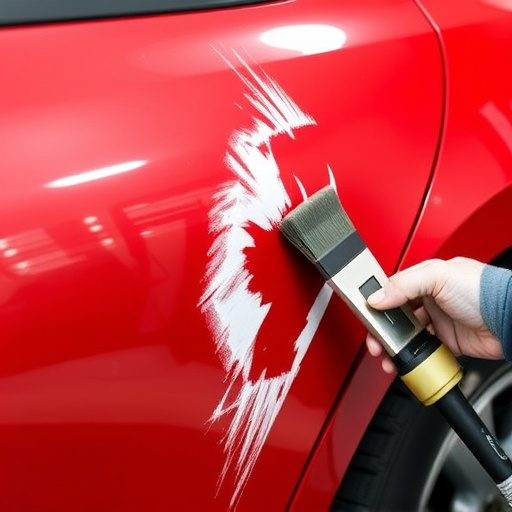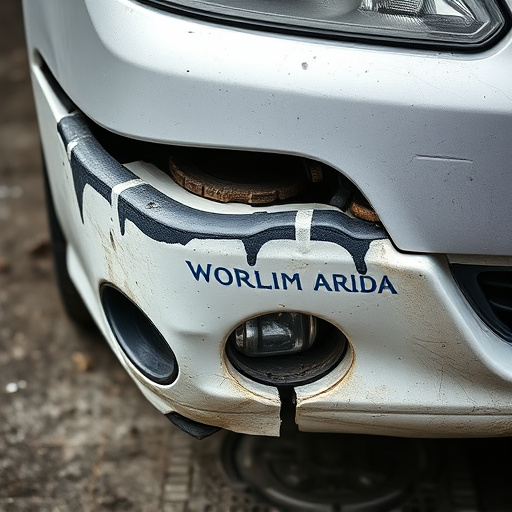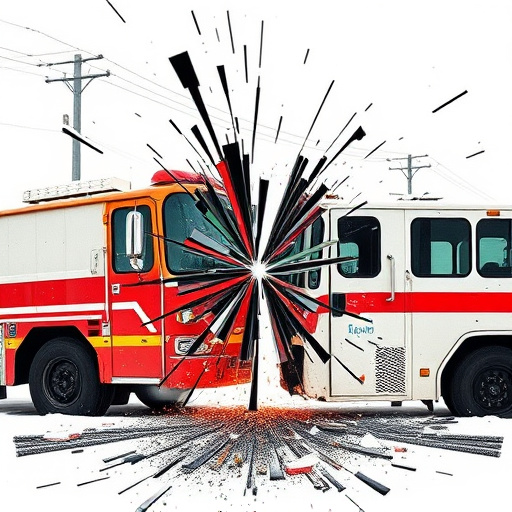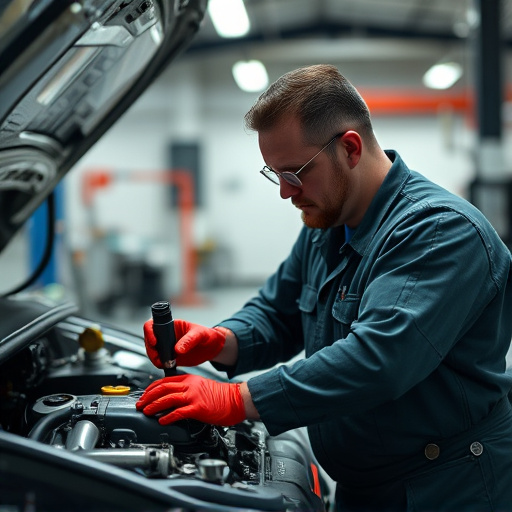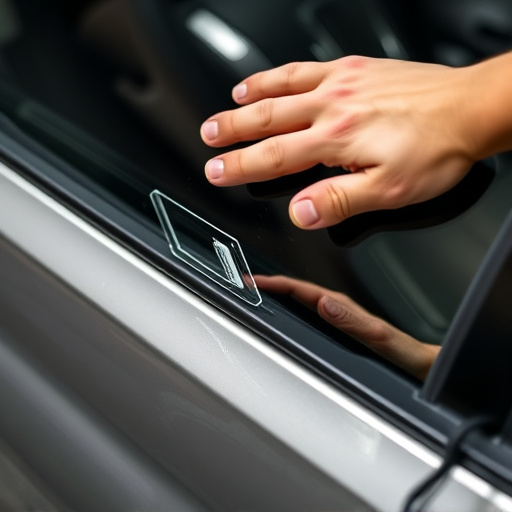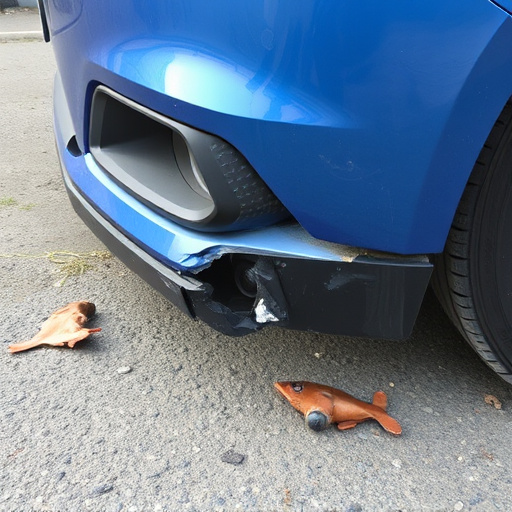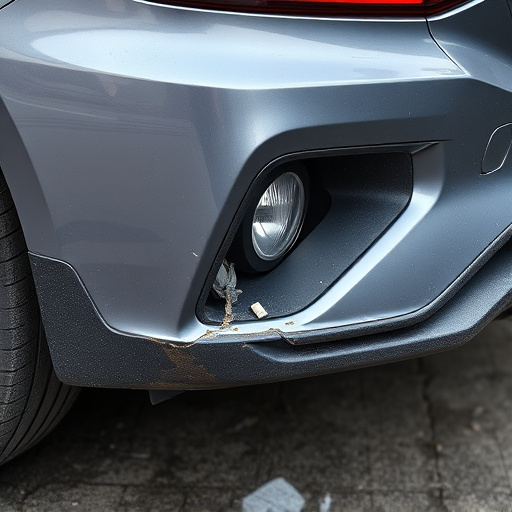Tesla performance calibration is a specialized process that optimizes engine and drivetrain after repairs, ensuring efficient operation and exceptional driving experience. Crucial for restoring dynamic performance post-accidents or significant repairs, it fine-tunes systems like acceleration, handling, and braking. Regular calibration prevents future issues, enhancing safety and saving on repairs, especially for components like auto glass that impact aerodynamics and stability.
Tesla performance calibration is a critical process that ensures your electric vehicle maintains optimal dynamics and efficiency after repairs. In a world where Tesla cars are becoming increasingly complex, understanding this calibration becomes essential. While repairs may restore functionality, they can disrupt the intricate balance of vehicle systems. This article explores why calibrating Tesla performance post-repairs is vital for enhancing handling, acceleration, and overall driving experience, delving into its impact on safety and sustainability.
- Understanding Tesla Performance Calibration
- Impact of Repairs on Vehicle Dynamics
- Benefits and Best Practices for Calibration After Repairs
Understanding Tesla Performance Calibration
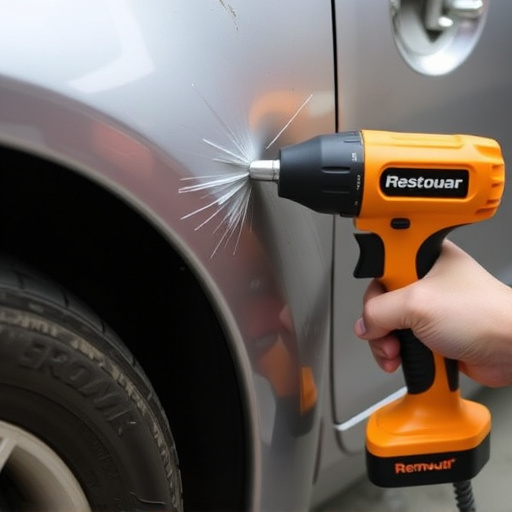
Tesla performance calibration is a specialized process that fine-tunes your Tesla’s engine and drivetrain components to ensure optimal performance after any repairs or maintenance work. It goes beyond mere adjustments; it involves advanced diagnostic tools and techniques to analyze and optimize various systems, including acceleration, top speed, and torque delivery. This critical step is often overlooked but plays a pivotal role in the overall health and efficiency of your Tesla.
When you bring your Tesla in for repairs or routine maintenance, especially at an auto repair shop near me that specializes in electric vehicles, it’s essential to follow up with a performance calibration. Vehicle repair professionals use sophisticated equipment to recalibrate sensors, adjust fuel injection settings, and fine-tune the communication between various modules in your Tesla’s control system. This ensures that every component works in harmony, delivering the powerful and responsive driving experience you’ve come to expect from a Tesla.
Impact of Repairs on Vehicle Dynamics

When a Tesla undergoes repairs, whether it’s for a minor fender bender or a more significant accident, the impact on its dynamic performance can’t be overstated. While structural integrity is paramount, the intricate systems that govern acceleration, handling, and braking are equally vital to the overall driving experience. Repairs that don’t account for these nuances can result in imbalances, affecting both safety and efficiency. A Tesla performance calibration acts as a fine-tooth comb, meticulously adjusting various parameters post-repair to ensure seamless reintegration of the vehicle’s systems.
Think of it like this: a car isn’t just a collection of metal and machinery; it’s a complex symphony of engineering. Even minor repairs can disrupt the harmonious interplay between the engine, transmission, suspension, and other components. That’s where paintless dent repair techniques or vehicle restoration processes come into play, as they meticulously address visible damage without compromising structural integrity. However, for optimal performance, a Tesla performance calibration ensures that every system operates in perfect harmony, translating to a smoother ride, improved acceleration, and enhanced overall driving dynamics.
Benefits and Best Practices for Calibration After Repairs
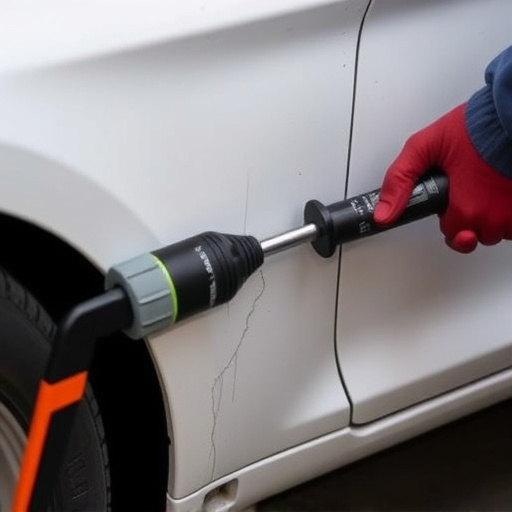
After any significant repairs or auto restoration work on your Tesla, undergoing a thorough Tesla performance calibration is essential. This process ensures that all systems are functioning optimally and seamlessly integrates the repaired components with the vehicle’s existing ecosystem. Calibration not only enhances overall car performance but also improves safety features, ensuring they operate at their peak efficiency.
Best practices for post-repair calibration involve checking and adjusting various parameters such as engine timing, throttle response, brake pressure, and steering sensitivity. It’s crucial to engage professional auto repair services that specialize in Tesla performance tuning to guarantee accurate and reliable results. Regular calibration also serves as a preventative measure, identifying potential issues early on, thereby saving you from costly future repairs. This is especially true for components like auto glass replacement, which can impact aerodynamics and overall vehicle stability if not properly calibrated post-installation.
Tesla performance calibration is a crucial step after any repair, as it ensures the vehicle’s dynamic balance and optimal performance. By recalibrating, you maintain the integrity of the car’s systems, enhancing safety, handling, and overall driving experience. It’s a game-changer that ensures your Tesla continues to deliver on its promise of power and precision, making every drive a testament to advanced engineering.
